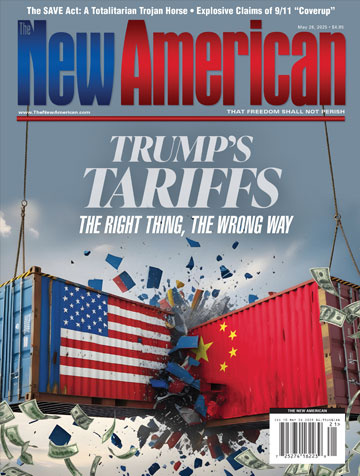
This is how far-left judges “legislate from the bench.” Diane Wood, the senior judge of the U.S. Court of Appeals for the 7th Circuit, changed the meaning of the word “arms” in the Second Amendment, and then ruled on Friday that her new meaning allowed Illinois’ ban on “assault weapons” to stand.
In the 2-1 ruling, the lone dissenter, a Trump-appointed judge, called her out, setting the stage for a possible appeal to the U.S. Supreme Court.
Wood, a Clinton appointee from 1995, is also a director of the American Law Institute (ALI), which was begun in 1923 to assist judges in how to understand properly the myriad new laws cascading from state legislatures and federal agencies. But over time the ALI has become more and more an advocate for how laws should be interpreted.
As John Fund wrote in National Review, “More and more lawyers think that the ALI has departed from its core mission and is becoming an engine driving novel legal rules.” The late Supreme Court Justice Antonin Scalia also voiced concern about ALI’s rewriting the law as they want it to be instead of as it is.
Wood, also a member of Planned Parenthood and the National Organization for Women (NOW), seized the opportunity to rewrite the Second Amendment, justifying it by declaring:
As we know from long experience with other fundamental rights, such as the right to free speech, the right peaceably to assemble, the right to vote, and the right to free exercise of religion, even the most important personal freedoms have their limits.
Government may punish a deliberately false fire alarm; it may condition free assembly on the issuance of a permit; it may require voters to present a valid identification card; and it may punish child abuse even if it is done in the name of religion.
The right enshrined in the Second Amendment is no different.
Therefore, implies Judge Wood, anything goes, including declaring for the first time that the Second Amendment somehow doesn’t apply to all “arms.” “Military” arms are somehow mysteriously excluded and, therefore, if Illinois’ ban on “assault weapons” and the magazines that feed them can be declared to be “military,” or at least “military” in appearance, then the ban stands.
Wrote Wood:
The State of Illinois, in the legislation that lies at the heart of these [combined] cases, has decided to regulate assault weapons and high-capacity magazines — a decision that is valid only if the regulated weapons lie on the military side of that line [separating “personal” weapons from “military” weapons] and thus are not within the class of Arms protected by the Second Amendment.
Once having created the faux “straw man,” it was easy for her to rule that the ban passes constitutional muster:
Coming directly to the question whether the weapons and feeding devices covered by the challenged legislation enjoy Second Amendment protection, at the first step of the Bruen analysis, we conclude that the answer is no.
We come to this conclusion because these assault weapons and high-capacity magazines are much more like machineguns and military-grade weaponry than they are like the many different types of firearms that are used for individual self-defense (or so the legislature was entitled to conclude).
Indeed, the AR-15 is almost the same gun as the M16 machinegun. The only meaningful distinction, as we already have noted, is that the AR-15 has only semiautomatic capability (unless the user takes advantage of some simple modifications that essentially make it fully automatic), while the M16 operates both ways.
Both weapons share the same core design, and both rely on the same patented operating system.
Therefore, the same applies to the magazines as well: “Turning now to large-capacity magazines, we conclude that they also can lawfully be reserved for military use.”
Wood uses the Supreme Court’s ruling in District of Columbia v. Heller (Heller) to justify her ruling:
Based on the record before us, we are not persuaded that the AR-15 is materially different from the M16. Heller informs us that the latter weapon is not protected by the Second Amendment, and therefore may be regulated or banned.
Because it is indistinguishable from [a] machinegun, the AR-15 may be treated in the same manner without offending the Second Amendment.
Thus, concluded Judge Wood, the lower court’s ruling against the Second Amendment and for the Illinois ban stands, “based on the fact that military weapons lie outside the class of Arms to which the individual right applies.”
The Trump-appointed judge, Michael Brennan, dissented, calling her creation “remarkable”:
The Second Amendment “right of the people to keep and bear Arms” is not a second-class right.
Yet the State of Illinois and several Illinois municipalities have categorically banned law-abiding citizens from keeping and bearing a sweeping range of firearms and magazines.
In a remarkable conclusion, the majority opinion decides that these firearms are not “Arms” under the Second Amendment.
Because the banned firearms and magazines warrant constitutional protection, and [the State of Illinois has] failed to meet [its] burden to show that [its] bans are part of the history and tradition of firearms regulation, preliminary injunctions are justified against [the state’s] enforcement of the challenged laws.
I respectfully dissent.
Brennan went on to correct Judge Wood:
The decision in Barnett [the lower court’s ruling] was correct.
The district court properly rejected the notion that the Second Amendment protects only the possession and use of weapons for self-defense.
The banned magazines are “Arms,” as are other appurtenances such as a pistol grip and a flash suppressor.
The [lower] court correctly read Heller and Bruen to locate “in common use” in Bruen’s history and tradition.… This led the [lower] court to correctly issue an injunction against the Act.
Wood’s “straw man” that she conjured makes her ruling a likely candidate for appeal to the Supreme Court.




